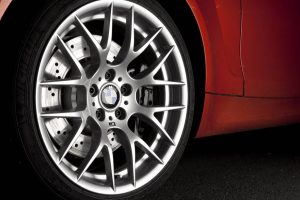View Monthly Specials!

Tires are expensive. They are also one of the most important parts of your car when it comes to your safety and often the most neglected. Tires wear down as the miles pile on no matter what kind of car you drive. Each tire manufacturer provides the number of miles the tires should go before they need replacing, but depending on how you drive, this number could be higher or lower. Here are some tips for extending the life of your tires.
1. Keep The Correct Pressure
Maintaining the correct tire pressure is essential to maximizing the life of a tire. You should check the pressure at least once a month to make sure your tires are correctly inflated. Remember, fluctuations in temperature can change the pressure, so always check them when the temperatures drop. Also, always check the pressure before you head out on a long trip. If the tires become underinflated, excess heat could build up in the tire as you drive and lead to failure. The correct pressure is usually listed on the driver’s side door jamb.
2. Rotate, Rotate, Rotate
You should have your tires rotated regularly so they wear evenly. Your vehicle’s owner’s manual will have the specific intervals required between rotations, or you can find it in the new tire warranty. If you can’t find it, a good guideline to follow is rotating your tires every 5,000 to 8,000 miles.
3. Keep the Wheels Aligned
If you feel any kind of vibration or the car starts to drift to one side, it probably means that your vehicle is out of alignment. If you keep driving the car this way, the tires will unevenly wear down, which will shorten their life. It is not uncommon for wheels to come out of alignment; it happens as you drive over bumps, potholes, and even curbs. A wheel alignment should be a part of your regular vehicle maintenance, and it will also help extend the life of the tires.
4. Keep Out of the Sun
It is impossible to keep your car and its tires out of the sun completely, but minimize the time by parking in a garage or keeping it in the shade. The harsh rays of the sun can cause the tires’ rubber to crack.
5. Change Your Tires With the Seasons
If you live in a place where it gets cold and snowy during the winter, consider changing over to snow tires for the winter season. Snow tires use a different rubber compound designed for cold weather, and the design of the tread also provides better traction on the snow and ice. If you change out your tires each season, you’ll get more miles out of each set. Just remember to remove the snow tires as soon as the weather warms up so you don’t add unnecessary wear.
Regular maintenance is key to extending the life of your tires. You can also add to the mileage by keeping them out of the sun and using snow tires in the winter.
Image via Flickr by The National Roads and Motorists’ Association




